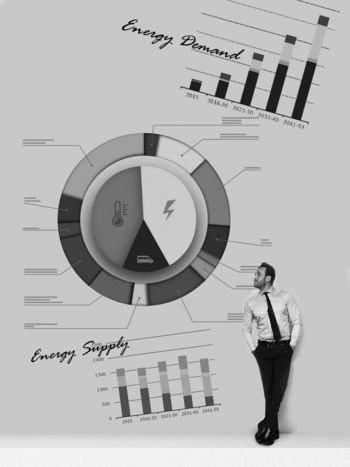The impact of Electricity Market Interventions by System Operators during Emergency Situations
During emergency situations System Operators are typically able to intervene in power system operation and also when relevant in market activities.
This work explores the impact of such interventions on electricity markets during or close to real time dispatch. Interventions support System Operators actions to restore power systems to normal operation by instructing market participants, to act in ways they would not voluntarily do and may have financial consequences on affected participants This impact on market actors often receives little attention, and in many cases, there are no clear rules or procedures in place to compensate affected market participants, complicating the resolution of the aftermath of such interventions. This work is expected to help rule makers better understand the topic and its consequences when designing regulations.
Members
Convenor (NL)
J. VAN PUTTEN
Secretary (IN)
V. PANDEY
D. KLAAR (NL), T. ALSHAIKH (SA), G. DOORMAN (NO), K. FURUSAWA (JP), A.ANVARI-MOGHADDAM (DK), E. SHARIEF (SA), S. MUKHERJEE (IN), G. MUKHERJEE (IN), G. THORPE (AU), M. NTUSI (ZA), J. BOGAS (SP), Z. JOUNDI (US), A.CHOPRA (IN), I.ARONOVICH (IL), J.GING (IE)
Scope/Methodology
A survey was performed to collect insights from System Operators around the world on what options they have for intervening in ways that impact markets, get information about actual events where intervention was used plus several related topics. When designing the survey it became clear that we should have a frame work of which markets to consider, what system situations to consider and how to define a market intervention by a System Operator. This became even more clear when the survey responses were analyzed, which made clear that there are different interpretations of this topics around the world. Therefore it was agreed that for this work the focus would be on physical markets close to real time and not on any financial markets, future markets etc.
It was also explored how system states are defined around the world, but finally it was decided to focus in the Technical Brochure on the interventions and leave out the system state(s) during which this was executed. The rationale for this was that it was deemed more important to look into interventions that affect markets, independent of the reason/system state why it was executed.
This then led to the definition of “intervention” to be used in this work, which reads as follows:
An intervention is an action by the System Operator to maintain or improve the integrity of the power system, that obligates a party to act in a way other than they would otherwise do, according to their preferences, under the prevailing system and market conditions, as established by the system and market operator under the market rules.
Throughout the document, the described measures and actions are compared to this definition to determine whether they qualify as interventions. To illustrate this, several examples from the survey are described, including those that do not qualify as interventions, with explanations provided. These examples, collected in tables, illustrate what kind of actions are considered interventions and why others are not. The consequences of such actions for market participants are also described.

Description of the Technical Brochure
The Technical Brochure begins by establishing the general background of the subject and the rationale behind undertaking this work. Additionally, it provides insights into several relevant related topics that, while not directly within the scope, are considered valuable for documentation and may serve as input for future endeavors. These aspects are elaborated upon in 4 main chapters of the Brochure, the focus of which can be summarized as follows:
First chapter of the TB deals with markets, emergency situations and interventions, it describes the scope of the work in terms of the mentioned topics. And it delivers a definition of intervention that is further used (see above). Some illustrative cases are given.
Second chapter of the TB, current practices and experiences, describes the results coming from the survey. It also includes observations and discussions of a number of topics where different approaches were chosen sometimes at a regional and other times more at a market organization level. It shows the differences in this respect...



